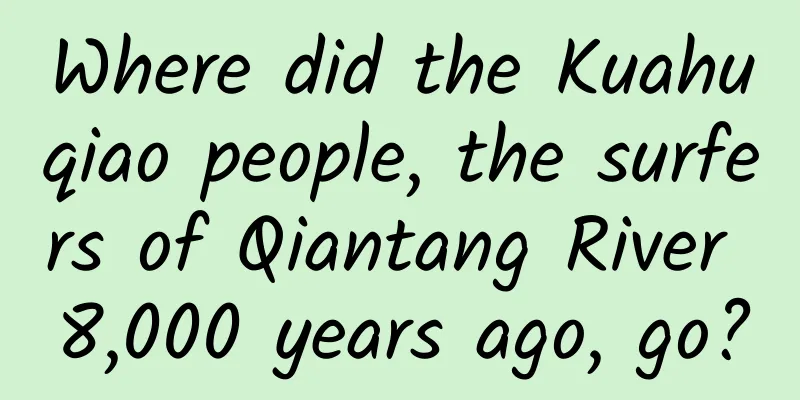Zhang Xudong: Only when the black soil is darker can we eat better

|
If we cannot ensure the continued production of Northeast China's granary, There may be problems with survival. Zhang Xudong, Researcher at the Institute of Applied Ecology, Chinese Academy of Sciences Gezhi Lundao Issue 60 | November 21, 2020, Beijing Today I want to share a story that is both familiar and unfamiliar to everyone: soil. The scenery of the earth is equally beautiful, and one of the important components of the beautiful scenery of the earth is soil. Without soil, there would be no such scene; without soil, there would be no human race; without soil, there would be no civilization on Earth; so soil is an important basic material that supports Earth civilization. ▲ Soil refers to a layer of loose material on the land surface, composed of various granular minerals, It is composed of organic matter, microorganisms, animals, water, air, etc., and can grow plants. Maybe you think that soil is just a handful of dirt. We can see it all day long. Even if we don't go to farmland, we can still see soil in some roadside green belts. In fact, soil is very magical. It is not only magical and complex in material, but also contains organic matter and minerals at the material level. In addition, there are many organisms in it, and it is a huge biological reservoir. Soil can only be alive if there are organisms. These organisms include microorganisms, which include fungi, bacteria, and viruses. Through the COVID-19 pandemic, we all know what viruses are. There are a lot of viruses in the soil, but the presence of viruses does not necessarily cause disease. So soil is a very complex and magical system. In addition to microorganisms, there are animals in the soil. Earthworms are very common and can be seen with the naked eye, and there are many animals that are invisible to the naked eye. Microorganisms are even smaller. Microorganisms are invisible to the naked eye, but their number is huge. How many are there? For example, if we use grams as a unit, there are more than a billion microorganisms in one gram of soil. ▲ Soil is a huge biological reservoir and a biological entity; soil organisms are interconnected Although it is very small, its role is very large. That is to say, without soil, there will be no soil microorganisms and no functions of soil organisms. Our greatest expectation for soil is that it can produce green plants. The food we eat, whether directly or indirectly, comes from the soil. If there is no soil and the soil has no production capacity, there will be no food supply. Soil is inclusive Completed: 10% ////////// In addition to this function, soil has a huge number of other functions. To express it in another word, soil is very inclusive. ▲ Soil is a green plant production plant and a natural digester and purifier Think about pollutants, whether they are industrial or natural, they can be degraded in the soil. Of course, heavy metals are another matter. Organic pollutants can be degraded in the soil. The soil makes dirty things clean, which acts as a cleaner. It also acts as a filter. For example, rainwater or irrigation water is filtered and purified by soil, and the water that comes out is clean. If the soil does not have this tolerance, then there will be no clean water in our world. Groundwater is very clean because of the cleaning and filtering function of soil. Without this function, we will not have this clean environment, so soil is very important. ▲ Organic matter is the core component of soil and is black gold There is a very important substance in the soil. As you can see from the picture, it is very black when you squeeze it with your hands. It is called soil organic matter. There are two kinds of solid components in the soil, one is organic matter and the other is minerals. Where do minerals come from? Once the rock is weathered, it gradually breaks down. After breaking down, its structure changes, and finally it becomes a completely different composition from the rock. The original rock minerals become soil minerals. It accounts for the vast majority of the soil composition, generally accounting for more than 90%. What percentage of soil is organic matter? The soil in the south is only 1%, or even less than 1%. The organic matter in Northeast China's black soil is a little higher, generally only 2-3%, and as high as 4-5%. But it plays a very critical role, because soil is an organic component, it can interact with minerals to form particles, aggregates, and then form structures. In this way, the soil is not just like minerals with bad structures. Why is this so? If there is no organic matter, just like minerals, then the roots of plants cannot take root and water cannot flow in. In this way, crops cannot grow in the soil and microorganisms cannot survive in it. Now let's talk about its function. The organic matter in the soil is black. We all know that if the color of light is absorbed, it will be black. The soil is black, and the darker it is, the higher its organic matter content is, so the darker the soil, the better. Why is the soil in Northeast China called Northeast Black Soil? It is because the Northeast Black Soil has a high organic matter content. In the early days of reclamation in history, the organic matter content of Northeast Black Soil was very high. We often say: You can squeeze out oil from a handful of soil. But now everyone, look, there are several bottles here, the soil of different colors has different properties, the most important thing is the organic matter content. But the special whitish one, the one with salt in it, is another color. Organic matter is very important. It does not fall from the sky. In fact, it is the dead branches and leaves on the surface that are decomposed by microorganisms and converted into organic matter. The farmland ecosystem has root stubble. If the crop straw is returned to the soil, microorganisms can decompose the soil and then form a special substance called soil organic matter. It gradually accumulates in the soil, so that the soil can be transformed from the original mineral into soil. This process is very slow. It takes hundreds of years to accumulate one centimeter of organic matter. The shortest time is 200 to 300 years, and the longest time may be 1,800 years. ▲ Where does soil organic matter come from? It is a long process, but it is relatively easy to destroy it and it does not take that long. Therefore, if you want to maintain the balance of organic matter, you cannot do it without external input. Because there are microorganisms in the soil, external organic matter is the best food for microorganisms. Inputting these can not only form organic matter, but also provide food for microorganisms, provide the carbon source and energy they need. In this way, microorganisms will be happy and the whole system will become better. Northeast China's black soil is the country's granary Completed: 30% ////////// The darker the black soil is, the better our lives will be. Why is this so? There are four large black soils in the world, three of which are in the northern hemisphere. There is one in Northeast my country, one in Ukraine, one in the Mississippi Plain in North America, and one in the Pampas Plain in Uruguay, South America. These places in the world are all high-yield black soil areas and grain-producing areas. If there were no four large black soils in the world, there might not be so many people on the earth today. Only when this black soil can be better protected can people live better. There is a concept called Northeast Black Soil, which means the entire Northeast region is called Northeast Black Soil. Of course, the soil from south to north has different organic matter content and color. In addition to the three provinces in Northeast China, the four eastern leagues of Inner Mongolia are also black soil. The area of black soil in Northeast China is very large, but the area of cultivated land is not large. If the total area is more than 1 million square kilometers, then the cultivated land area is 400 million to 500 million mu. However, if calculated by proportion, it accounts for one-fifth of the country's cultivated land. Because the black soil has a high yield, its grain output exceeds the national average, reaching one-quarter, and its commercial grain output can reach one-third. That is to say, one out of every three bowls of rice eaten in our country is produced from the Northeast black soil. Therefore, the Northeast black soil is very important to my country's food security. We call the Northeast black soil the Northeast granary. It is the country's largest commercial grain base. We call it the ballast stone of my country's food security and a stabilizer. ▲ The Northeast granary accounts for 20% of the country’s arable land, 25% of the country’s grain output, and 33% of the country’s grain supply. If there is a problem with the black soil in Northeast China, there will be a problem with my country's food security. Because the current international situation is very complicated, food security is of vital importance. The US restrictions on our high-tech, especially Huawei, may make our mobile phones worse and our quality of life worse. But if we cannot ensure the continued production of the Northeast granary, if there is a problem with the granary, our survival may be in trouble, so the Northeast granary is very important. There is indeed a problem with the Northeast’s granary, which is soil degradation. The soil in Northeast China is not as black as before, and the black soil layer is not as thick as before. It has become thinner. The manifestation in production is that its fertility has decreased and it has become greedy. Why do we become greedy? If we don't apply fertilizers and don't produce crops, the grain production will not be maintained. So we will use a lot of fertilizers. Although this can ensure a certain yield, it also brings great environmental problems. Farmers are now constantly applying fertilizers to the soil. One mu of land can apply more than 100 kilograms of fertilizers, and one hectare of land can apply almost one ton of fertilizers, which is a large amount. However, the crop utilization rate of fertilizers is not high, especially nitrogen fertilizers, which generally have a utilization rate of only 40%, and the applied fertilizers run into the environment. On the other hand, it can turn into gas because there are microorganisms in the soil. The fertilizers we apply can turn ammonium nitrogen into nitrate nitrogen. Nitrate nitrogen denitrifies and turns into nitrite nitrogen, which finally turns into gas. Because it is a greenhouse gas, it will cause global changes. Another point is that because the soil is permeable, the gas will enter the groundwater, which will be polluted, that is, the nitrate content will exceed the standard. Why does the nitrate content exceed the standard? Because we apply too much fertilizer, the soil is poor, the utilization rate of nitrate is low, and it enters the environment and causes environmental problems. I have been working on soil carbon and nitrogen for decades and have done a lot of theoretical research. Now I feel that we have theoretically revealed that the most critical reason for the degradation of the black soil in Northeast China is the irrationality of the traditional farming system. ▲ Loss of black soil layer——decreased organic matter content—— Wind erosion, soil desertification - bare and unprotected ground Our agricultural civilization has been around for thousands of years. Although it is not as long in the Northeast, it still has a history of several hundred years. Farmers pay attention to intensive cultivation. We plow the land in autumn, and in spring we prepare the land, harrow the land, and build ridges. In addition, farmers have a habit of not leaving even a blade of grass, thinking that this is what makes a good farmer, a serious farmer. If the land is dirty, which is called unclean in Northeast China, then it means that you are not a good farmer. This will cause a problem. When the wind blows, because the surface is not covered and the soil is loose, the fine particles will be blown away after the strong wind, and finally the coarse particles will be left. However, the finer the particles, the higher the organic matter content and the better the nutrients. After being blown away, the soil becomes desertified. If it is blown like this for a long time, the soil will become sandy. This is sandy soil. The soil properties have deteriorated, and its functions have also deteriorated. If it continues to be blown, it will not be a problem of sandy soil, but the entire land will become a desert. So the desert is not a desert in the first place. It was originally soil. There is no difference between these soils. After a long period of screening by the wind, the fine particles are blown away. When a sandstorm blows, the sand and soil underground are blown up from the topsoil and transported away. In the end, most of them enter the ocean. Another reason is that the surface is exposed. Because the Northeast is a landform with many hills and rivers, its slope is not steep, but the slope is very long. The rainfall in the Northeast is not heavy, but the intensity is very high, so it causes surface erosion. The surface erosion has formed a series of ditches, but in addition to the ditches, the entire surface is eroded after a heavy rain, which may wash away a few millimeters or even one millimeter. Where does the washed away soil go? To the rivers, and eventually to the sea. Large rivers have deltas, the Yangtze River has a delta, and the Yellow River also has a delta. Where does the soil in the delta come from? Why can a delta be formed? The soil on the surface, especially the soil on the cultivated land, will be eroded after rain. Then the precious black soil layer on the surface of the soil is finally transported to the sea, and the sea forms a delta after sedimentation. In fact, the Yellow River has more silt, which is deposited before reaching the sea, so why is the riverbed of the Yellow River getting higher and higher? This means that the soil particles impacted by the surface gradually settle, so the riverbed of the Yellow River is rising higher and higher. ▲ Straw is burned and baled - soil deterioration - water erosion and soil loss In addition, there is another key factor about traditional farming. Why didn't farmers leave the straw in the fields in the past? Because in the past, the Northeast was very cold, and of course it is still cold now. There was no alternative energy at that time, but people needed to keep warm and cook in winter. What did they rely on? What should we do if there was no energy in the non-coal-producing areas at that time? Straw is the most important energy source, so he uses straw for firewood, cooking, and heating. But now, with more and more alternative energy sources, straw has become waste. What should we do? Either we pack it up and take it away, or if it is really useless, we burn it. What is being burned? What is being burned is resources, because the formation of soil organic matter requires a source, raw materials. Therefore, the soil organic matter is getting lower and lower, that is, the black soil layer is getting lower and lower, which is the cause of soil erosion. The soil surface was gradually washed away, from the original depth of one meter, or even 70 or 80 centimeters, to the current 30 to 40 centimeters, or 40 to 50 centimeters. The organic matter content dropped a lot from the original 45% to 34%, down to one third or even half, so the soil gradually degraded and its properties deteriorated. We have done a lot of research, especially in the Academy of Sciences, and there is a special project on carbon. The main component of soil organic matter is carbon, organic carbon. If it is global change, we call it carbon, and in the soil it is called organic matter. When we were doing a special study on carbon, we found that only the Northeast China had black soil that was still declining, while the soil organic matter in other regions began to rise. As for why it was declining, we did a lot of research on the mechanism, but this can only publish some papers. We still need to think about how to truly solve the soil problem. A revolution in farming systems Completed: 60% ////////// The farming system is unreasonable, so how to change it? What farming system can be used to restore soil organic matter and make the Northeast black soil blacker? We have done a lot of research and developed a new technology called straw mulching no-till technology. This technology has completely changed the entire farming system. In the past, it was intensive farming and all the straw was removed from the ground. Now it is not the case. After harvesting, all the straw is left on the ground. Depending on how to farm the next year, it can be retained in different ways, such as covering the ground like a blanket. ▲ Ground cover - organic residue input This is the first special no-till seeder we developed, which can sow and fertilize with high quality even when the soil is covered with a lot of straw, so the situation of seedlings and the entire tillage system have completely changed. In fact, we have been working on the change of farming system for 14 years, starting in 2006. We have been doing basic research for a long time. President Xi Jinping emphasized writing papers on the land and truly solving production practice problems. So we thought that the only possible solution was to adopt conservation tillage. So in 2006, we wanted to develop new conservation tillage technology, and we found an experimental base in the northeast, which is Lishu, Jilin. When we arrived in Lishu, Jilin, we found Director Wang of the Agricultural Extension Center to discuss the matter, and later we found several other people to discuss it together. When I told these people about my idea, they all agreed that this was indeed a good thing. But the reform of the farming system is not so easy. It is a long-term task, because any reform requires a long process. But everyone thought it was a good thing, so we later felt that we were dreaming. Because everyone thought it was a good thing, we must continue to do it, but we didn’t know how long it would take to do it well. So we said at that time, it doesn’t matter, if we don’t do it well, the next generation can continue to do it. Our dream has now become a reality. In fact, conservation tillage is a reform of the farming system, and more importantly, it is a reform of concepts. It is very difficult to get everyone to accept it. Not only farmers, but also officials and scientists must accept it. If none of them accept it, this work will be difficult to do. This farming system is a technology with less input and more harvest, so we call it "less input, more harvest". We have been using this technology in Northeast China for 14 years. Although we encountered many difficulties, we have been persisting. To do agriculture, you have to deal with farmers, so we set up an experimental base in Lishu, rented farmers' land, and signed contracts to develop our technology. The farmers didn't know much at first, but the money they paid for signing this contract was higher than other contracts, so they were very happy. But in the first two years, they felt that we were not like farmers farming. After harvesting, we left the straw on the surface of the ground, which was completely different from traditional farming. The farmers laughed at us and said, "Are you still farmers like this? Can you still farm and grow crops?" In fact, there are many doubts about the application of this technology, including from scientists. There must be problems at the beginning, because the straw is all on the surface, and it is very difficult to sow with high quality. This requires high quality of the seeder and operation technology. If the seeding is not done well, the seedlings will not grow well, and the seedlings will be broken. Another thing is that the surface of the land under conservation tillage is like a quilt, with the straw on the surface. This is because the temperature in Northeast China is lower than in Beijing. Temperature is a very critical factor in determining yield. When the straw is covered on the surface, the surface temperature rises slowly in spring, and the seedlings grow slowly, so the people are unhappy. Two years ago, scientists also said that this technology was not good, because the seedlings grew very slowly in spring. But we have our data, its roots grow much better, and when the temperature rises later, it not only grows faster, but also has a well-developed root system, which is good for absorbing nutrients and water. After two years of planting, we found that this not only can produce grain, but also has a high grain yield. Especially in drought, it has a strong ability to resist drought and retain moisture, so the yield is better. So in the end, this technology gradually matured and was gradually promoted on a large scale. Now it has been promoted to tens of millions of acres in Northeast China, producing great economic effects. But on the other hand, because we are doing research, we not only want to develop a technology. How should we cover the straw and how much should we cover? How should we deal with the straw when sowing? How can the no-till seeder sow well to ensure high quality, good growth and high yield? The reason why the soil is magical is that it has functions. The most important thing is that there are organisms in the soil, especially microorganisms. When the microorganisms are happy, the soil will be good. Have the microorganisms changed? ▲ Sufficient food - the number of earthworms increased significantly - biodiversity increased We have done a lot of research. Earthworms are relatively simple and easy to test. After two or three years of research, we easily saw a lot of earthworms when we dug up the straw on the surface. However, it is not easy to test microorganisms because they are very small. There are more than a billion microorganisms in one gram of soil. They are basically invisible to the naked eye and difficult to see with a microscope. But now there is a new technology called high-throughput sequencing technology. We take a small amount of soil, extract DNA, and use high-throughput sequencing to know what microorganisms are there at the genetic level and whether their types have increased. It is indeed different. The number of microorganisms has increased, the diversity has increased, the entire community structure has improved, and the entire function has improved, which means that the microorganisms have improved. Only when the microorganisms are improved can the soil organic matter increase and the nutrients improve. This is our ultimate goal. What we ultimately want is to increase the soil organic matter and improve the overall soil properties. When the soil nutrients increase, crops can absorb them, the nutrient supply improves, and the soil moisture improves, because moisture is also the most critical factor in determining yield. So in addition to microorganisms, let's first see if this has any effect on organic matter. Through more than a decade of research, we have found that organic matter has indeed increased. When tilling, there is a certain depth, the tillage layer is 20 centimeters, and the organic matter in 20 centimeters can increase. ▲ Adequate food - increased organic matter The amount of straw returned will increase the amount of organic matter, but it can at least increase by 20%, which is considerable. Because the increase of organic matter is very slow, you may not see an increase within a few years. So in addition to paying attention to the amount of organic matter increase, we also have to pay attention to its mechanism, how it increases, and how microorganisms can increase organic matter. Our team is working on microbial residues. What are microbial residues? After the microorganisms die, their remains go into the soil and become soil organic matter. We can separate the cell walls of the microbial residues. After extracting the cell walls, we can determine the composition of the cell walls. This is a technology that we pioneered internationally, and we have always played a leading role internationally. How far can we go? In the soil, carbon and nitrogen have isotopes. Carbon 13 and carbon 12 are isotopes. For nitrogen, nitrogen 15 and nitrogen 14 are also isotopes. So we can use isotope technology to distinguish the organic matter from the straw and the original organic matter contributed by microorganisms in the soil. In this way, we know that the contribution of microorganisms has increased, and we can do it. We have made great progress in this work, so the soil has turned black . The original soil degradation was that the soil became more and more yellow, but now the soil has really turned black, the soil organic matter has increased, and the microorganisms are happy. Because when microorganisms supply plant residues, they are good nutrients, but when the supply stops, they rely on the soil nutrients in the soil itself, a large amount of nitrogen, phosphorus and potassium, which are not only needed by crops, but also by microorganisms. So the number of microorganisms has increased, the soil organic matter has increased, the microorganisms are happy, their activity has increased, and their enthusiasm has increased. This has another good effect, because when applying fertilizers, especially chemical fertilizers now, the labor force in rural areas is getting smaller and smaller, and farmers prefer to apply fertilizers all at once. However, crops grow gradually and need fertilizers gradually, so what should we do? Microorganisms have a function, that is, when crops do not need them, the chemical fertilizers we apply can convert the original inorganic into organic, so there is no loss. Why is the utilization rate of chemical fertilizers low? It is because of the inorganic form in the soil. Inorganic fertilizers, whether ammonium nitrogen or nitrate nitrogen, are easily lost in the soil. Once they become organic, they cannot escape, so they are stored in the soil and gradually absorbed by crops when they need them. With less nutrients in the soil, microorganisms also absorb less, and they feel unhappy. In this way, they accelerate the decomposition of the originally stored nutrients and turn them into effective elements, that is, effective nutrients. This makes the crops happy, so nutrients can be supplied continuously. We have done research and found that this technology can increase nutrient utilization by 15%-30%, so we can reduce the use of chemical fertilizers by 20% . ▲ Supplement nutrients - continuously supply nutrients - save 20-30% of fertilizers After reducing the use of chemical fertilizers, on the one hand, farmers are happy and save money, and on the other hand, the pressure on the ecological environment is reduced and pollution is reduced. The same is true for water. We still need to drink water when we eat. Without water, we cannot digest. Although corn is also delicious, after chewing it to a certain extent, there is no saliva left, so we still need to drink some water. Because the soil is covered, water seepage is accelerated. When evaporation occurs, the soil has a blanket, which slows down evaporation. When it rains, it can be stored in the soil, and a reservoir is formed in the soil. The amount of water that this reservoir can accumulate is equivalent to an increase of 50-70 mm of precipitation each year. Because the precipitation in the Northeast during the growing season is only 400-500 mm, and 50-70 mm of precipitation is equivalent to two or three large moderate rains, or two heavy rains, which is very considerable. ▲ Drought resistance and soil moisture conservation: Improved rainwater penetration, reduced evaporation, and increased soil water retention capacity From the picture, we can see that when there is no conservation tillage, during drought, the yellowing and non-yellowing crops are completely different, so it is important to enhance the ability to resist drought and retain moisture. Protecting the Black Soil in Northeast China Completed: 90% ///////// / In fact, this work is not only done by us, but also by the country. It has now risen to the level of national strategy. The national strategy is that the country formulates an action plan, relies on policy subsidies in the Northeast, and vigorously promotes protective work to make the Northeast black soil become darker and more sustainable, that is, "storing grain in the ground and storing grain in the warehouse". When General Secretary Xi visited Northeast China in July this year, he specifically looked at our conservation work. At that time, he compared the black soil in Northeast China to the giant pandas in the cultivated land. **We must protect and utilize the giant pandas in the cultivated land so that they will always benefit the people. **So now, with the support of national policies, we want to make the black soil in Northeast China darker and darker through scientific research efforts, so that our lives will become better and better. - END - The articles and speeches only represent the author’s views and do not represent the position of the Gezhi Lundao Forum. Formerly known as "SELF Gezhi Lundao", it is a scientific and cultural forum launched by the Chinese Academy of Sciences, co-sponsored by the Computer Network Information Center of the Chinese Academy of Sciences and the Bureau of Science Communication of the Chinese Academy of Sciences, and hosted by China Science Popularization Expo. It is committed to the cross-border dissemination of extraordinary ideas, aiming to explore the development of science and technology, education, life, and the future in the spirit of "investigating things to gain knowledge". Welcome to follow the official website of Gezhi Lundao: self.org.cn, WeChat public account: SELFtalks, Weibo: Gezhi Lundao Forum. |
<<: Study finds COVID-19 survivors at high risk of death within 12 months
Recommend
Logical structure thinking training camp course
Improve the clarity of thinking and problem-solvi...
Think twice before selling a used hard drive: Did you really delete everything?
If a hard drive or SSD is no longer in use, how m...
It’s not that it’s harder to get traffic, it’s that you don’t understand your users!
What do users like to pay attention to? How can w...
JD.com 11.11 promotion tips, traffic acquisition strategy
As 11.11 is getting closer, almost all e-commerce...
Can 360 Bidding Software Assistant really improve promotion results?
Many friends started to do 360 bidding promotion ...
Search traffic has decreased, social traffic has doubled, how to grasp the app operation?
Trend: Search traffic declines, social traffic do...
The Mauritius oil spill may have been caused by crew members using WiFi. The truth behind the Mauritius oil spill is revealed
Mauritius oil spill may have been caused by crew ...
Tips for placing advertising video content on Tik Tok!
This article takes the education industry as an e...
Interesting Talk about the Prototype of the Strange Snake in "Classic of Mountains and Seas"
Today we are going to talk about the strange snak...
Dark matter vs. modified gravity theory, has the ultimate showdown begun?
Dark matter has always been a frontier topic in p...
Pay attention! The first "Tiangong Classroom" is about to start
"When filling out my college entrance examin...
Solve the three major pain points of information flow promotion in 5 steps! Collected~
In our promotion process, we often encounter thre...
Once the wound heals, the pain is forgotten, so why do scars remain after the wound heals?
Everyone is familiar with "scar physique&quo...
collect! Content requirements for food advertisements
Advertisement refers to commercial advertisements...
What is Intel RealSense Technology?
Since Shenzhen IDF 14 (held on April 2, 2014), In...









